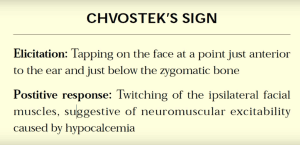A client has had an uncomplicated repair of an inguinal hernia. On the second post- operative day, the client has mildly elevated temperature and general malaise. The nurse recognizes that this is a generalized body response which is common to which phase of healing?
Inflammatory
Proliferation
Remodeling
Infection
The Correct Answer is A
Choice A rationale: An inflammatory response, including mild fever and malaise, is common during the inflammatory phase of healing, which occurs in the initial postoperative period.
Choice B rationale: Proliferation is the phase of healing characterized by tissue repair and regeneration, not by fever and malaise.
Choice C rationale: Remodeling is the final phase of healing involving tissue maturation and strengthening, not associated with generalized body responses.
Choice D rationale: Infection is a separate complication and may present with more severe symptoms than mild fever and malaise.
Nursing Test Bank
Naxlex Comprehensive Predictor Exams
Related Questions
Correct Answer is B
Explanation
Choice A rationale: Injecting air into the regular insulin and then into the NPH is not the correct sequence.
Choice B rationale: Injecting air into both vials and withdrawing the regular insulin first is the correct sequence when drawing up a combination of short-acting and intermediate- acting insulins.
Choice C rationale: Injecting air into and withdrawing the NPH immediately is not the correct sequence.
Choice D rationale: Withdrawing the regular insulin first is not the correct sequence when preparing a mixed insulin injection.
Correct Answer is D
Explanation
Choice A rationale: A potassium level of 4.2 mEq/L is within the normal range and would not validate Trousseau's and Chvostek's signs.
Choice B rationale: A phosphate level of 3.0 mg/dL is within the normal range and would not validate Trousseau's and Chvostek's signs.
Choice C rationale: A magnesium level of 1.8 mEq/L is within the normal range and would not validate Trousseau's and Chvostek's signs.
Choice D rationale: A calcium level of 6.9 mg/dL is below the normal range and could validate Trousseau's and Chvostek's signs.

Whether you are a student looking to ace your exams or a practicing nurse seeking to enhance your expertise , our nursing education contents will empower you with the confidence and competence to make a difference in the lives of patients and become a respected leader in the healthcare field.
Visit Naxlex, invest in your future and unlock endless possibilities with our unparalleled nursing education contents today
Report Wrong Answer on the Current Question
Do you disagree with the answer? If yes, what is your expected answer? Explain.
Kindly be descriptive with the issue you are facing.
